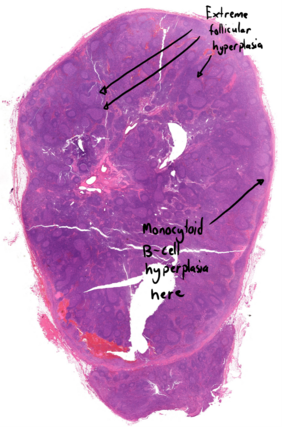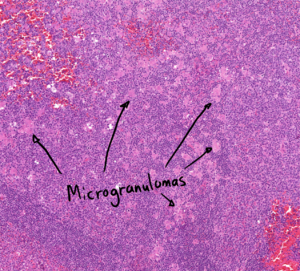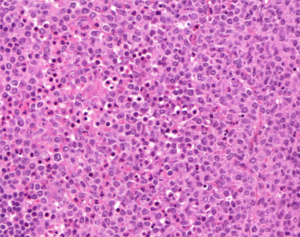15. Toxoplasma lymphadenitis: Difference between revisions
No edit summary |
No edit summary |
||
| Line 1: | Line 1: | ||
[[File:Toxoplasma lymphadenitis - overview.png|thumb|Overview]]'''Staining''': HE | [[File:Toxoplasma lymphadenitis - overview.png|thumb|Overview|427x427px]]'''Staining''': HE | ||
'''Organ''': Lymph node | '''Organ''': Lymph node | ||
Latest revision as of 13:40, 7 July 2024

Staining: HE
Organ: Lymph node
Description:
There is extreme(ly large) follicular hyperplasia, as seen by the abnormally large germinal centres. With higher magnification are small granulomas visible, so-called microgranulomas. In a small, triangular area on the right part of the slide can we see B-cells that resemble monocytes, so-called monocytoid B-cell hyperplasia.
Diagnosis: Toxoplasma lymphadenitis
Causes: Toxoplasmosis
Theory:
Toxoplasmosis is a condition caused by infection by the parasite toxoplasma gondii. In 90% of cases is the condition asymptomatic. Especially those that are immunocompromised are at risk to develop symptoms, which includes lymphadenitis. It’s part of TORCH.


